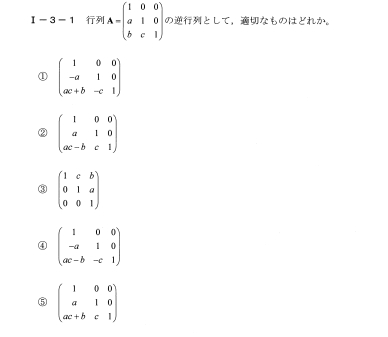了解しました。直近5年間における世界中の学術論文から、Fusion 360を活用した機械工学分野の研究事例を調査し、要点を整理してご報告します。少々お待ちください。
https://chatgpt.com/share/682b2359-5180-800d-8b55-85eb104192ec
Fusion 360 in Mechanical Engineering Research (2020–2025)
Autodesk
Fusion 360 has emerged in the past five years as a versatile platform for mechanical engineering research, integrating computer-aided design (CAD), engineering simulation (CAE), and even fabrication (CAM) in one tool. Many peer-reviewed studies worldwide (2020–2025) have leveraged Fusion 360 for various research stages – from 3D modeling and generative design to simulation (finite element analysis, thermal analysis) and preparing parts for 3D printing or CNC manufacture. Below, we categorize key examples by research domain, describing how Fusion 360 was used, the research objectives, and the outcomes, with links to the source papers where available.
Robotics and Mechatronics
Fusion 360’s CAD and prototyping capabilities have been widely used in robotics research to design and test new mechanical systems:
- Omni-directional Mobile Robot (2022) – Researchers designed all components of a 4-wheeled spherical omni-wheel robot using Fusion 360’s 3D modeling tools, then fabricated the parts via 3D printing. Fusion 360 was instrumental in the modeling stage (ensuring parts fit and function), and the printed assembly was integrated with motors and controllers. Preliminary tests of the assembled robot showed the design to be feasible and effective, providing a promising low-cost solution for mobile robotics.
- Assistive Robotic Arm (2023) – In an assistive technology project, a 6-degree-of-freedom robotic arm was modeled entirely in Fusion 360 during the design process. The CAD model defined the arm’s geometry for fabrication and assembly with off-the-shelf electronics (Raspberry Pi, Arduino). This use of Fusion 360 streamlined the iterative design of the arm’s mechanics. The resulting prototype was lab-tested and demonstrated to be ready for industrial production, validating that the arm can reliably aid disabled users in daily tasks.
(These examples highlight Fusion 360’s strength in mechanical modeling and rapid prototyping for robotics. By handling the CAD design and exporting for 3D printing or machining, Fusion 360 enabled researchers to quickly build and evaluate novel robotic devices.)
Aerospace and UAV Design
In aerospace and drone research, Fusion 360 has been used for
generative design and structural optimization of lightweight components:
- Generative Drone Frame (2021) – A study in UAV design used Fusion 360’s Generative Design capability to create an optimized quadcopter frame. The researchers specified design constraints (loads, mounting points) and allowed Fusion 360’s cloud-based solver to generate multiple lightweight frame geometries. They then utilized Fusion’s Simulation workspace (FEA) to evaluate static stress, deformation, and modal frequencies of the top design, comparing it to a standard DJI F450 frame. The Fusion 360–generated frame was lighter and stiffer, showing significantly lower deformation under load than the conventional design. This demonstrated that Fusion 360’s integrated CAD/CAE tools can produce and verify an improved drone chassis within a single platform, accelerating the design cycle for UAV components.
(This example illustrates Fusion 360 being applied in conceptual design optimization for aerospace structures – using its generative design algorithm to explore creative solutions and its FEA tools to validate performance before any physical prototype is made.)
Automotive Engineering (Simulation of Vehicle Components)
Mechanical engineering researchers in the automotive domain have utilized Fusion 360 primarily for
simulation and analysis of component designs:
- Disc Brake Thermal Analysis (2022) – A comparative study of disc brake designs leveraged Fusion 360 for both modeling and CAE. Researchers modeled ventilated brake rotors with various hole patterns in Fusion 360, then switched to Fusion’s Simulation workspace to perform a thermal FEA on each design. By applying realistic heat flux and boundary conditions, they analyzed temperature distribution and heat dissipation for different materials (gray cast iron, Aluminum 6061, stainless steel) and geometries. Fusion 360 generated automatic reports of safety factors and thermal results for each case. The study found that a rotor with 160 cooling holes (a highly ventilated design) and made of Al 6061 alloy had the best performance – it achieved the highest heat flux (fastest heat dissipation) compared to cast iron or steel, resulting in the lowest operating temperature. This indicated that the Fusion 360–simulated aluminum design would be most resistant to brake fade. The use of Fusion 360’s built-in thermal solver was crucial for efficiently iterating designs and identifying the optimal configuration without external software.
(This case shows Fusion 360’s simulation capabilities in action for automotive research – the ability to quickly model a part and run thermal/stress analyses within the same environment. It enabled the researchers to optimize brake rotor design by balancing geometry and material for better performance.)
Consumer Product Design & Structural Analysis
Fusion 360’s integrated CAD and FEA have also been applied to the design of consumer products and appliances to ensure structural integrity:
- Refrigerator Shelf Stress Analysis (2021) – In this study, the structural strength of a refrigerator’s glass tray (shelf) was evaluated. The team created a detailed 3D model of the shelf in Fusion 360, then used Fusion 360’s static stress simulation (finite element analysis) to apply loads representing stored food weight. The software’s Simulation tab was used to set up supports and pressure loads corresponding to real usage conditions. After running the analysis, Fusion 360 produced a report of the shelf’s safety factor, deformation, and Von Mises stress distribution. The results showed that the chosen material (cold-formed Aluminum 5454 alloy) and design were sufficient – stresses were below yield and deformation was minimal, confirming the shelf would not fail under normal use. Thanks to Fusion 360, the designers could quickly verify the feasibility of the new shelf design and finalize the material choice without physical testing.
(This exemplifies Fusion 360 being used in product design validation. By performing FEA on the CAD model of a component (the refrigerator tray) in-house, researchers ensured the design met safety requirements. The all-in-one CAD+CAE workflow shortened the design iteration cycle for consumer appliance parts.)
Mechanical Design Optimization (Generative Design Case Studies)
Beyond specific applications, some research has focused on evaluating Fusion 360’s
design optimization tools themselves:
- Fusion 360 Generative Design Study (2021) – A detailed investigation by Buonamici et al. examined Fusion 360’s Autodesk Generative Design (AGD) module for solving a structural optimization problem. The paper described the end-to-end workflow: starting from an initial part geometry and constraints, using Fusion 360’s cloud solver to generate multiple design alternatives, and then carrying out FEA within Fusion 360 to assess each solution’s performance. Importantly, they also utilized Fusion 360’s integrated CAM environment to check the manufacturability of the optimized designs (e.g. simulating CNC toolpaths for the resulting shapes). The study’s case example (a robotic gripper arm component) demonstrated that Fusion’s generative design could produce several lightweight, viable design options that met the required safety factor. The FE analyses in Fusion 360 confirmed the generatively designed part could withstand the load, and CAM simulation verified it could be machined. This research highlighted Fusion 360’s capability to unify topology optimization, simulation, and fabrication considerations in one platform, and noted the efficiency of exploring unconventional designs with minimal user input.
(Such research in design methodology shows how Fusion 360 is not just used to model or simulate a known design, but also to innovate new designs. By using AI-driven generative design together with built-in analysis, engineers can discover creative solutions that traditional design might miss, all while ensuring those solutions are practical to manufacture.)
Summary Table of Fusion 360 Usage in Recent Mechanical Engineering Research
To summarize the above examples, the table below categorizes the main use-cases of Fusion 360 in 2020–2025 mechanical engineering papers, indicating the research field, how Fusion 360 was applied, and the project’s goal/outcome:
| Research Field |
Example (Year) |
Fusion 360 Usage |
Research Purpose & Outcome |
| Robotics (Mobile) |
Omni-directional Robot (2022) |
3D CAD modeling of all robot parts; exported designs for 3D printing and assembly. |
Developed a spherical-wheeled mobile robot. Fusion 360 enabled quick prototyping – the low-cost design was built and tests showed it to be feasible. |
| Robotics (Assistive) |
Assistive 6-DOF Arm (2023) |
Modeled the entire robotic arm mechanism in Fusion 360. |
Built and implemented a functional assistive arm for disabled users. The Fusion 360 model was realized in hardware, and testing proved the design ready for real-world use. |
| Aerospace (UAV) |
Generative Drone Frame (2021) |
Employed Fusion 360’s Generative Design + FEA to optimize frame geometry. |
Created a lighter, stiffer quadcopter chassis. The generatively designed frame had less stress and deflection under load than a traditional DJI F450 frame, improving payload capacity. |
| Automotive |
Disc Brake Analysis (2022) |
CAD modeling of ventilated brake rotors; thermal simulation in Fusion 360’s Simulation workspace. |
Identified optimal brake design and material. A 160-hole aluminum rotor dissipated heat fastest, yielding the lowest operating temperature (best performance against fade). |
| Product Design |
Refrigerator Shelf FEA (2021) |
Fusion 360 used for detailed part modeling and static stress analysis (structural FEA). |
Validated the shelf design’s safety. The simulation showed acceptable stress levels and deformation, confirming the chosen aluminum alloy was suitable for the shelf. |
| Design Optimization |
Generative Design Case Study (2021) |
Used Fusion 360’s cloud generative design to create multiple design alternatives; used built-in FEA and CAM to evaluate results. |
Demonstrated efficient topology optimization workflow. Fusion 360 produced manufacturable, lightweight designs meeting the required strength, which were verified via its FEA and CAM simulations. |
Each of these cases shows a
different role of Fusion 360 in mechanical engineering R&D – whether as a CAD tool for complex geometry, a simulation platform for stress/thermal analysis, a generative design engine, or an integrated environment to go from concept to 3D-printed part. By unifying these capabilities, Fusion 360 has enabled researchers to streamline their workflow. The result, as seen in the cited papers, is often faster design iteration and a validated end-product (be it a robot, drone component, or mechanical part) that meets the project’s requirements. This cross-disciplinary adoption in the last five years underscores Fusion 360’s growing importance in academic engineering research globally, from
robotics labs to automotive studies and beyond. The ability to model, simulate, and prototype all within one platform has proven to be a valuable asset for innovation in mechanical engineering.





